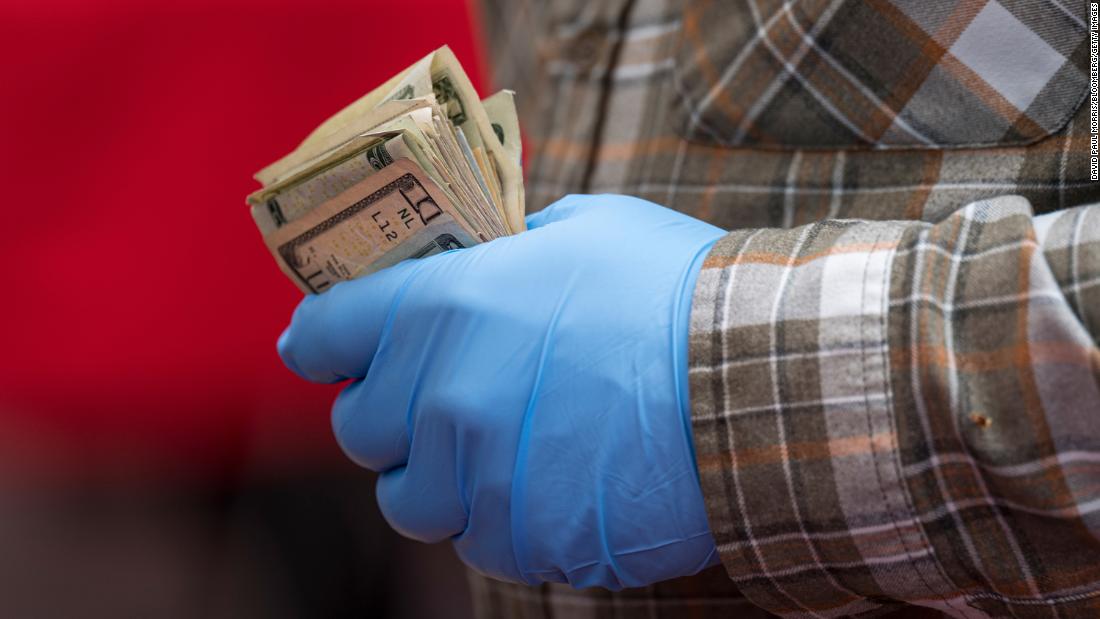[ad_1]
“But we have to look out for the overall economy. Low interest rates support employment, they support economic activity. And those are our mandates,” he added.
The lack of interest income isn’t deterring people from saving more even though many Americans are getting smaller paychecks.
The government also said Thursday that personal income fell 2% in March “due to the response to the spread of COVID-19, as governments issued ‘stay-at-home’ orders.” This was led by a staggering $327.6 billion drop in workers’ salaries and bonuses.
Incomes are down — but so is spending
Still, consumers may be saving more because they are spending less — a lot less, in fact.
The BEA also said Thursday that consumption expenditures fell 7.5% last month, led by a nearly $935 billion drop in spending on goods and services. Much of that is probably due to the widespread closure of businesses.
Americans spent less on non-essential medical care, leisure and recreation and autos. The one notable area where spending went up? Food and beverages consumed at home.
The savings rate briefly soared to a peak of 12% in December 2012 at the height of the fiscal cliff crisis — when federal tax cuts were set to expire and automatic government spending cuts were due to kick in. But it then plunged back to 5.8% in early 2013 after a budget deal was reached.
Since then, the savings rate has slowly but surely crept back up. One economist theorized that perhaps Americans were preparing for an inevitable downturn.
“Speculation is people were bracing for the next recession. I don’t look for silver linings, but the more people bank, the better the recovery,” he added.
[ad_2]
Source link


